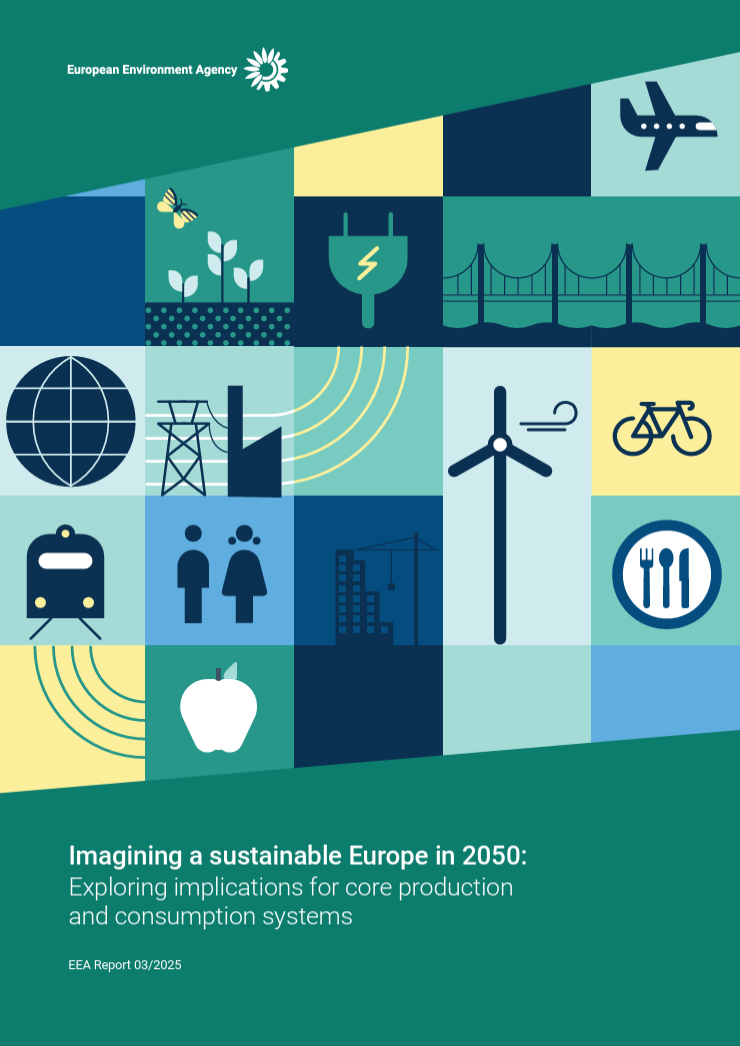All official European Union website addresses are in the europa.eu domain.
See all EU institutions and bodiesEEA report 03/2025
This foresight report looks at how Europe’s food, energy and mobility systems and the built environment could evolve. The report takes four imagined futures, or ‘imaginaries’, developed by the EEA and its network – Eionet, and explores how Europe’s key systems might evolve under each possible future.
EN PDF: TH-01-25-005-EN-N - ISBN: 978-92-9480-709-0 - ISSN: 1977-8449 - doi: 10.2800/4293606
Key messages
- To turn the EU′s long-term vision of ′living well, within environmental limits′ by 2050 into a reality, fundamental changes need to be made to the production and consumption systems that deliver on Europe′s demand for energy, food, mobility and shelter. In this context, collectively reflecting on desirable futures helps instil hope and guide action.
- A set of imagined futures, or ′imaginaries′, developed by the EEA and its country network — Eionet — were used to explore how the future of Europe′s production and consumption systems might unfold and identify challenges and opportunities.
- Core systems of production and consumption are deeply intertwined, which means that interventions in one system will have multiple knock‑on effects on other systems.
- Areas where actions have the potential to transform core production and consumption systems towards sustainability typically exhibit one or more of the following traits: they catalyse deep changes within several possible futures; they impact across systems; and/or can be operationalised within multiple European regions.
- The shift to alternative protein sources, the use of nature-based solutions, the decarbonisation of mobility, the repurposing and renovation of existing buildings, and the expansion of renewable energy systems are just some of the solutions identified in the report as enabling sustainability across all four futures.
- To navigate processes of systemic change and build resilience to future disruptions — from global unrest to climate breakdown or digital collapse — there is a need to strengthen societal capacities in key areas. These areas include: collaborative and anticipatory governance; societal engagement and creativity; connection to nature and empathy; spatial planning and multifunctional land use; AI and digitalisation; and preparedness for shocks, where strategic foresight plays a central role.
Loading

